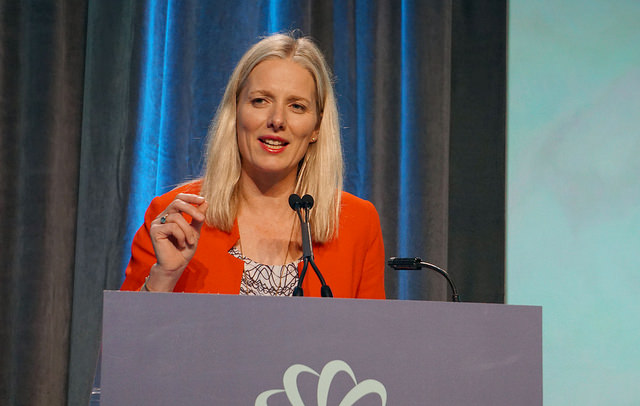Today, the Government of Canada outlined its initial thinking on how Canada will implement its national price on carbon. A technical document released by Environment and Climate Change Canada discusses major elements of the national price on carbon, a cornerstone commitment from last year’s Pan-Canadian Framework on Clean Growth and Climate Change.
It’s been clear since day one that Ottawa’s preferred approach is for all provinces and territories to implement their own carbon pricing systems. The federal government will not impose a carbon price on jurisdictions that have a system in place, so long as it meets key criteria: if the approach is a direct tax on emissions, it must cover at least the sectors covered in British Columbia’s model, must be at least $10 per tonne in 2018 and must rise to $50 per tonne in 2022. If the approach is cap-and-trade, it must include legislated emissions caps that decline by at least 30 per cent below 2005 levels by 2030. In the case of cap-and-trade, international credits – like those purchased under the Western Climate Initiative that includes Ontario and Quebec – are fair game.
In a practical sense, most provinces will meet the above criteria and will not have a carbon price imposed. However, for some provinces and territories – like Saskatchewan – the federal government may need to impose a “backstop” carbon price.
The legal challenge Premier Brad Wall has threatened is based on his view that the federal government does not have jurisdiction to enact a federal carbon pollution price. But experts we’ve spoken to disagree: in a recent Q&A with University of Ottawa’s Nathalie Chalifour, she said “Parliament is on solid constitutional ground with its national carbon pricing benchmark.”
The federal discussion paper makes clear that provinces that implement their own carbon pricing system will ultimately have more autonomy over key system design questions, including how levied monies will be used. Only if provinces choose not to price carbon will the federal rules apply. The Government of Canada states that they’re evaluating on how best to return the revenues. As previously reported, Ottawa could cut cheques directly to Saskatchewan families – surely a scenario Premier Wall’s government would prefer to avoid.
Details on the Alberta approach – and what this could mean nationally
Alberta’s approach to carbon pricing – including an upstream output-based allocation (OBA) system, and a downstream carbon levy – is one way to address competitiveness concerns, and has resonated with decision-makers in Ottawa. Well-designed carbon pricing systems can ensure industries and economies are more, not less, competitive in the long-run. As discussed in the Leach panel report, Alberta’s approach is designed to reduce negative competitiveness impacts in emissions-intensive, trade-exposed (EITE) sectors and avoid carbon leakage to other jurisdictions. According to analysis from the Ecofiscal Commission, about 18 per cent of Alberta and Saskatchewan’s economies are EITE. The national average, according to their research, is 5 per cent.
In a nutshell, the OBA system creates a carbon standard for products per unit of output such as a MWhr of power or a barrel of oil. Firms get an allocation based on the output they produce and pay the carbon price on any emissions above this level. This approach preserves competitiveness by limiting the total costs to firms. At the same time it maintains the strong incentive to reduce emissions as each incremental ton of emissions is charged at the full cost.
A properly designed OBA system must be targeted – only applying to EITE sectors with material competitiveness impacts – and must be evidence-based. It should be consistent across the economy, to avoid distortions, and it should be simple to implement. And, last but certainly not least, it should be temporary in nature – governments must offer early clarity on how these temporary treatments will change over time. On this last point, the Government of Alberta and the Government of Canada should offer further guidance on how they will phase-in full carbon pricing coverage for all sectors of the economy.
The second component of Alberta’s approach is a downstream carbon levy system. This carbon levy allows for broad coverage of combustion emissions from fossil fuels such, as transportation fuels and natural gas. This downstream carbon levy will begin at $20 per tonne this year, $30 per tonne in 2018 and will align with the federal price floor up to $50 per tonne.
Importantly, all revenue generated from the carbon price will be returned to Albertans. The province’s approach mandates that funds are prohibited from going into general revenues, and can only be used for the following purposes: providing rebates or adjustments to consumers, businesses and communities; reducing greenhouse gas emissions; and supporting Alberta’s ability to adapt to climate change.
Putting a price on carbon allows individuals and the market to make choices on how to reduce emissions. By giving fixed rebates, people can end up with money in their pocket if they choose to reduce their emissions, so the incentive to reduce emissions remains while they are protected from costs.
Moving Canada’s climate agenda forward
As we said last October, a pan-Canadian carbon price is big, positive news for Canada’s economy and environment. Despite uncertainty south of the border, this document makes it clear: Canada is committed to implementing a national price on carbon pollution. The heavy lifting of policy implementation and increased ambition still lies ahead, but today Canada took a big step towards getting its pan-Canadian approach over the finish line. It’s worth taking a moment to celebrate how far we’ve come as a country – in large part due to the vision and ambition of provincial premiers – and to reflect on how to maintain this momentum despite choppy international waters.










